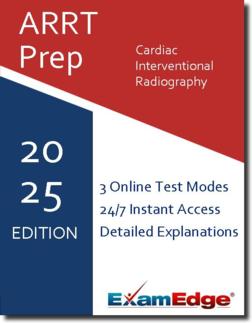ARRT® Cardiac-Interventional Radiography (CI) Practice Tests & Test Prep by Exam Edge - Blogs
Based on 40 Reviews
- Real Exam Simulation: Timed questions and matching content build comfort for your ARRT Cardiac-Interventional Radiography test day.
- Instant, 24/7 Access: Web-based ARRT Cardiac-Interventional Radiography practice exams with no software needed.
- Clear Explanations: Step-by-step answers and explanations for your ARRT exam to strengthen understanding.
- Boosted Confidence: Reduces anxiety and improves test-taking skills to ace your ARRT Cardiac-Interventional Radiography (CI).

Exam Edge Blogs for ARRT Cardiac-Interventional Radiography

RCIS VS ARRT: Differences Between Certifications Explained
In the medical imaging field, there are two types of certifications you’re going to learn about depending on the career path you choose. RCIS and ...
Read MoreExam Edge Blogs for ARRT Cardiac-Interventional Radiography

RCIS VS ARRT: Differences Between Certifications Explained
In the medical imaging field, there are two types of certifications you’re going to learn about depending on the career path you choose. RCIS and ...
Read More

